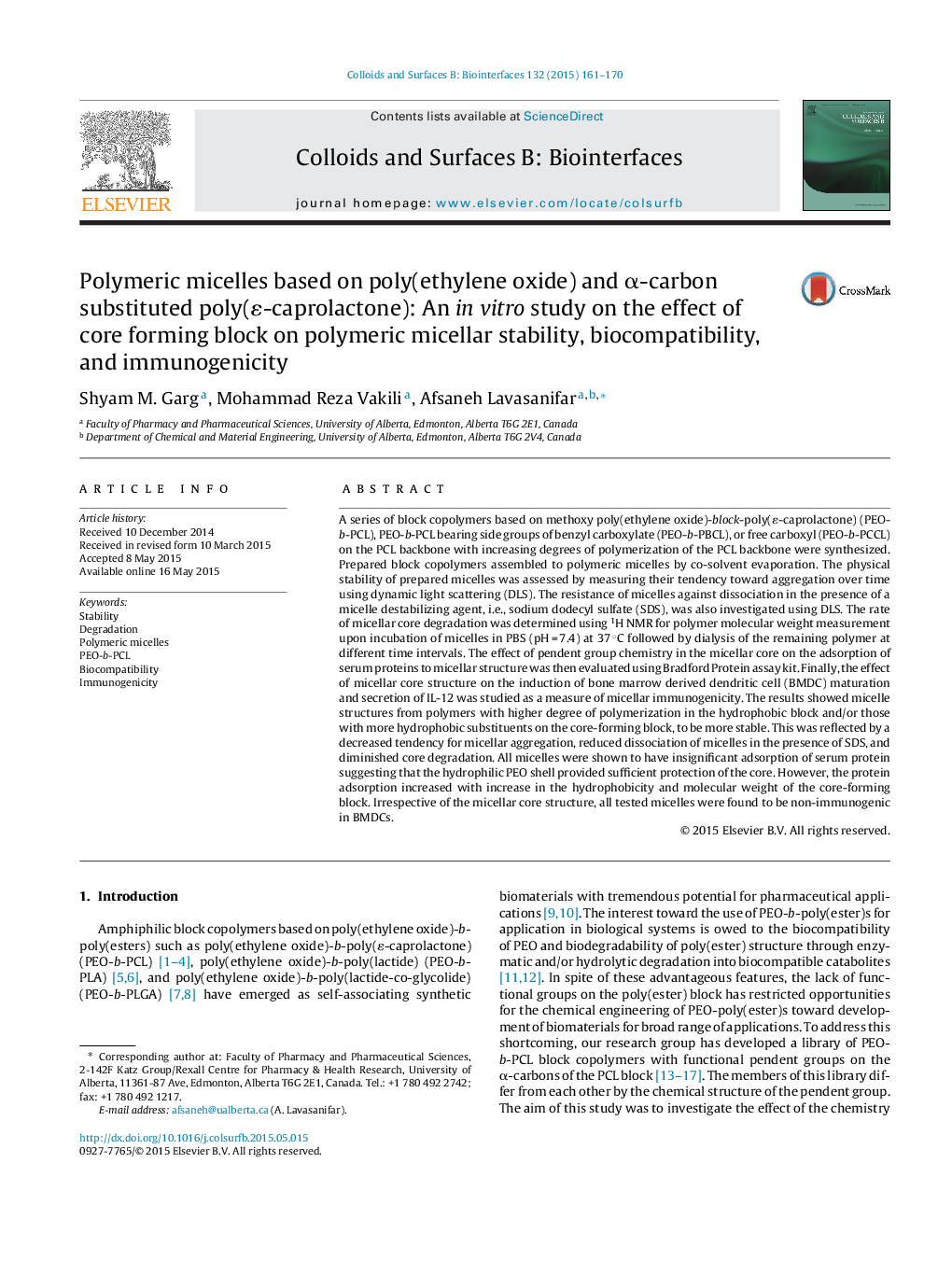| کد مقاله | کد نشریه | سال انتشار | مقاله انگلیسی | نسخه تمام متن |
|---|---|---|---|---|
| 599190 | 1454272 | 2015 | 10 صفحه PDF | دانلود رایگان |

• Structure of the core in PEO-b-PCL based micelles significantly affected their physicochemical and biological stability.
• PEO-b-PBCL micelles showed higher thermodynamic and kinetic stability than PEO-b-PCL and PEO-b-PCCL implying the need for a lower dose of administration for PEO-PBCL micelles.
• PEO-b-PBCL micelles showed lower dissociation, aggregation and degradation than PEO-b-PCL and PEO-b-PCCL micelles indicating better stability in aqueous media.
• All micelles showed minimal protein adsorption indicating the adequate coverage of the PEO coat on the micellar core and good biocompatibility.
• All micelles were non-immunogenic toward dendritic cells.
A series of block copolymers based on methoxy poly(ethylene oxide)-block-poly(ɛ-caprolactone) (PEO-b-PCL), PEO-b-PCL bearing side groups of benzyl carboxylate (PEO-b-PBCL), or free carboxyl (PEO-b-PCCL) on the PCL backbone with increasing degrees of polymerization of the PCL backbone were synthesized. Prepared block copolymers assembled to polymeric micelles by co-solvent evaporation. The physical stability of prepared micelles was assessed by measuring their tendency toward aggregation over time using dynamic light scattering (DLS). The resistance of micelles against dissociation in the presence of a micelle destabilizing agent, i.e., sodium dodecyl sulfate (SDS), was also investigated using DLS. The rate of micellar core degradation was determined using 1H NMR for polymer molecular weight measurement upon incubation of micelles in PBS (pH = 7.4) at 37 °C followed by dialysis of the remaining polymer at different time intervals. The effect of pendent group chemistry in the micellar core on the adsorption of serum proteins to micellar structure was then evaluated using Bradford Protein assay kit. Finally, the effect of micellar core structure on the induction of bone marrow derived dendritic cell (BMDC) maturation and secretion of IL-12 was studied as a measure of micellar immunogenicity. The results showed micelle structures from polymers with higher degree of polymerization in the hydrophobic block and/or those with more hydrophobic substituents on the core-forming block, to be more stable. This was reflected by a decreased tendency for micellar aggregation, reduced dissociation of micelles in the presence of SDS, and diminished core degradation. All micelles were shown to have insignificant adsorption of serum protein suggesting that the hydrophilic PEO shell provided sufficient protection of the core. However, the protein adsorption increased with increase in the hydrophobicity and molecular weight of the core-forming block. Irrespective of the micellar core structure, all tested micelles were found to be non-immunogenic in BMDCs.
Figure optionsDownload as PowerPoint slide
Journal: Colloids and Surfaces B: Biointerfaces - Volume 132, 1 August 2015, Pages 161–170